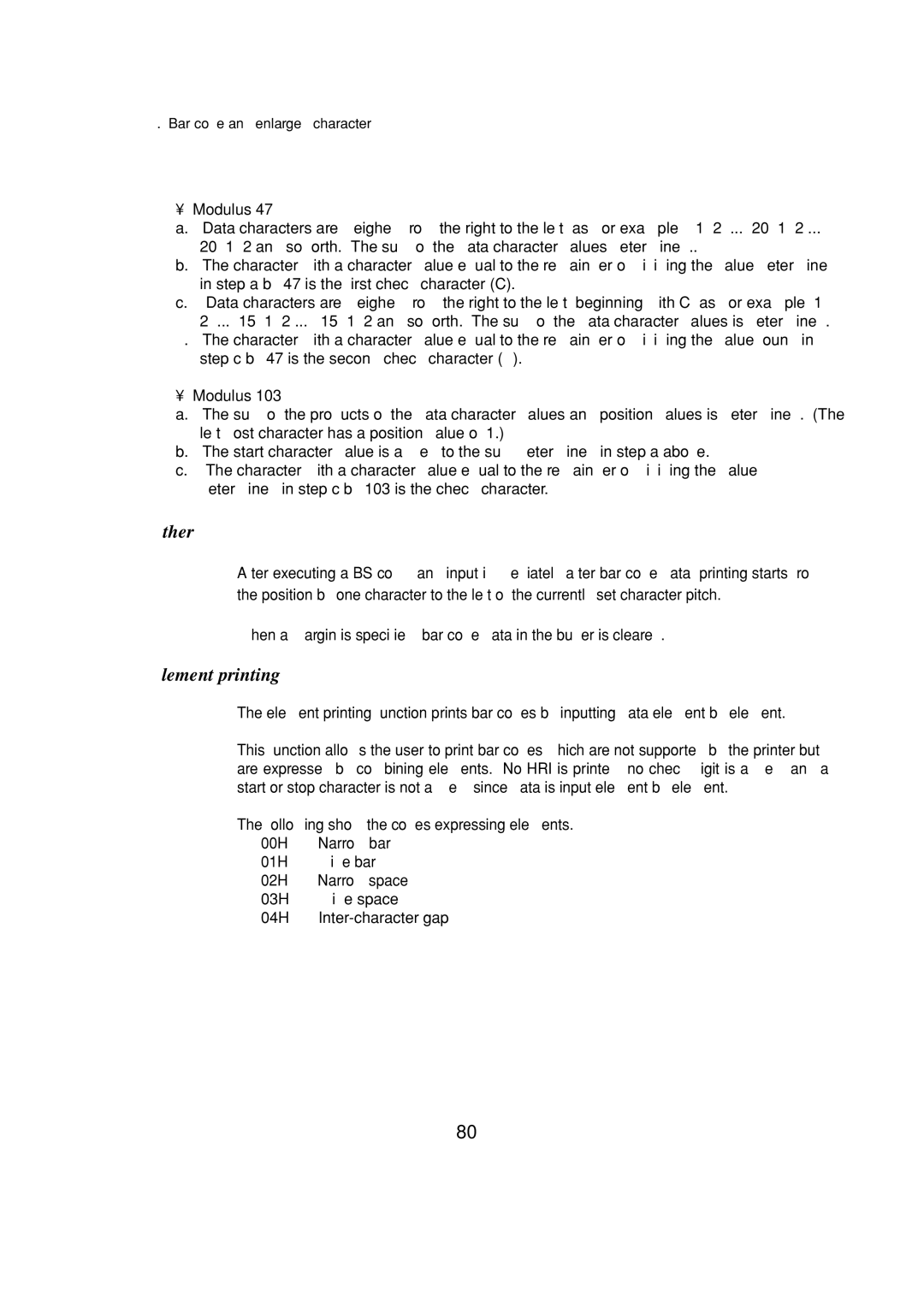9. Bar code and enlarged character
• Modulus 47
a. Data characters are weighed from the right to the left, as, for example, 1, 2, ..., 20, 1, 2 ...
20, 1, 2 and so forth. The sum of the data character values determined..
b.The character with a character value equal to the remainder of dividing the value determined in step a by 47 is the first check character (C).
c.Data characters are weighed from the right to the left, beginning with C, as, for example, 1, 2, ..., 15, 1, 2 ... , 15, 1, 2 and so forth. The sum of the data character values is determined.
d.The character with a character value equal to the remainder of dividing the value found in step c by 47 is the second check character (K).
• Modulus 103
a.The sum of the products of the data character values and position values is determined. (The leftmost character has a position value of 1.)
b.The start character value is added to the sum determined in step a above.
c.The character with a character value equal to the remainder of dividing the value determined in step c by 103 is the check character.
Other
●After executing a BS command input immediately after bar code data, printing starts from the position by one character to the left of the currently set character pitch.
●When a margin is specified, bar code data in the buffer is cleared.
Element printing
●The element printing function prints bar codes by inputting data element by element.
●This function allows the user to print bar codes which are not supported by the printer but are expressed by combining elements. No HRI is printed, no check digit is added, and a start or stop character is not added, since data is input element by element.
●The following show the codes expressing elements.
00H: Narrow bar
01H: Wide bar
02H: Narrow space
03H: Wide space
04H:
80
